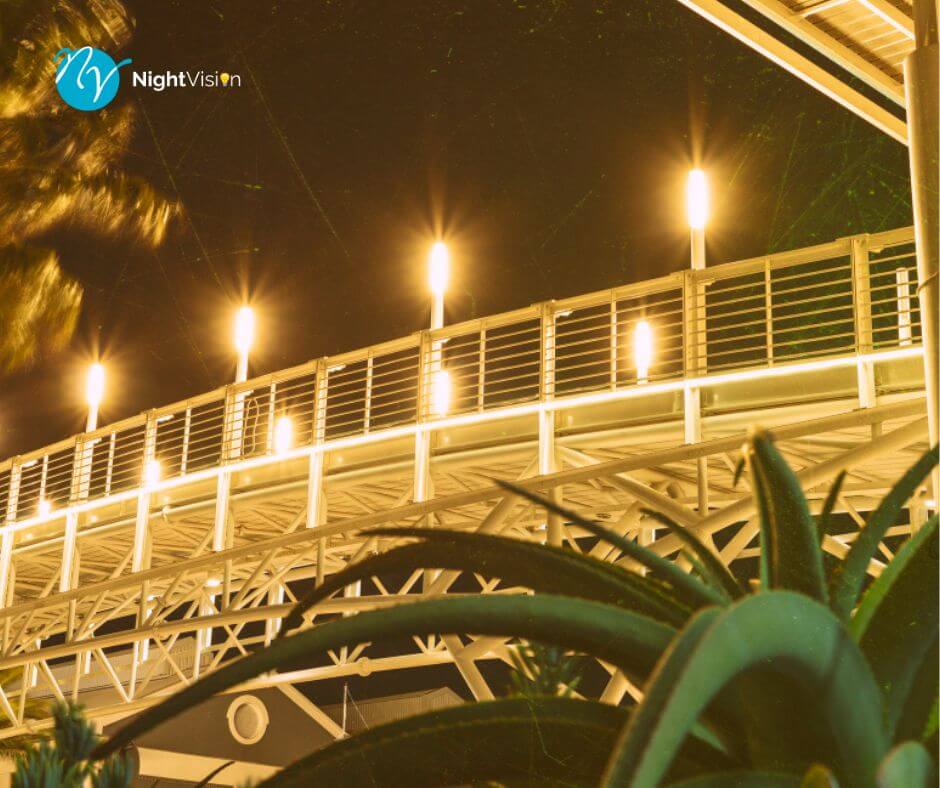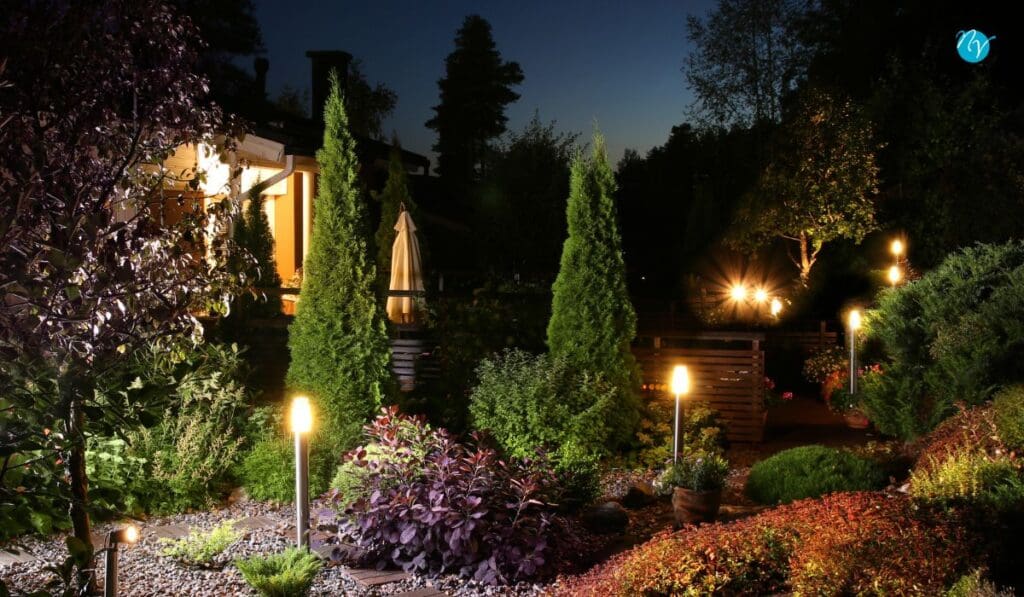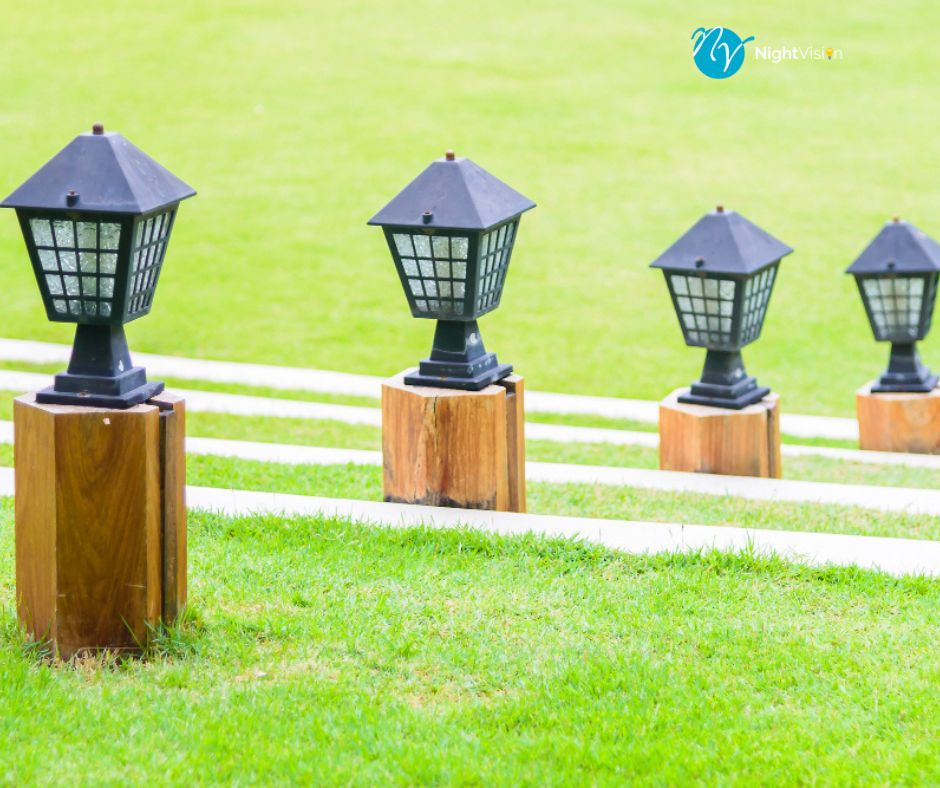Landscaping is an art form that transforms outdoor spaces into visually stunning and functional areas. One crucial aspect of landscape design is lighting. Installing landscape lights not only enhances the aesthetic appeal of your outdoor space but also adds an element of safety and security. However, before embarking on the journey of landscape light installation, there are essential steps and considerations to ensure a seamless and successful project.
Assess Your Landscape Design
Before installing landscape lighting, it is imperative to conduct a comprehensive evaluation of your existing landscape design. This initial step serves as the bedrock for a successful lighting installation, ensuring not only aesthetic appeal but also functional efficiency.
Begin by scrutinizing your outdoor space, paying particular attention to key focal points that define its character. Trees, pathways, and architectural features stand out as prime candidates for strategic lighting. Consider the natural elements of your landscape that can be accentuated with well-placed illumination, enhancing the overall ambiance.
Define Your Lighting Goals

To embark on a successful landscape light installation, it’s crucial to define your lighting goals precisely. This initial step serves as the compass, guiding the entire installation process toward achieving the desired ambiance and functionality for your outdoor space.
Begin by asking yourself what atmosphere you want to create. Are you aiming for a soft, ambient glow that bathes the entire area in a subtle radiance, or do you prefer focused illumination to highlight specific features? This decision shapes the subsequent choices in terms of light types, intensities, and placements.
Create a Lighting Plan
The creation of a meticulous lighting plan is paramount to orchestrating a captivating and efficient landscape lighting display. This plan serves as the blueprint for the installation process, ensuring that each light fixture is strategically placed to achieve optimal results.
Assessment of Angles:
Delve into the angles at which the light will fall on different elements of your landscape. This consideration is crucial for highlighting features without causing harsh shadows. Carefully angled lights can accentuate textures and add depth, contributing to an overall visually appealing environment.
Shadows and Highlights:
Anticipate the interplay of shadows and highlights in your outdoor space. A well-crafted lighting plan takes into account the natural shadows cast by plants, structures, and other elements. By strategically placing lights, you can mitigate undesirable shadows and create a balanced play of light and dark.
Intensity Calibration:
Consider the desired intensity of illumination for each area. Some spaces may benefit from subtle, low-intensity lighting for a serene ambiance, while others may require brighter illumination for functional purposes. Calibrating the intensity ensures that your landscape is uniformly lit, avoiding over-illumination or unsightly dark patches.
Fixture Placement:
Outline the specific placement of each light fixture based on your predetermined lighting goals. Path lights should guide without overpowering, spotlights should accentuate focal points, and well lights should discreetly enhance architectural features. Each fixture’s placement is a deliberate choice, contributing to the overall coherence of the lighting scheme.
Preventing Over-Illumination and Dark Spots:
A well-thought-out lighting plan safeguards against over-illumination or dark spots. By strategically distributing light fixtures, you can ensure that no area is overly bright, causing discomfort, or too dim, leading to safety concerns. This balance creates harmonious and aesthetically pleasing illumination throughout your landscape.
Choose Quality Lighting Fixtures

In the realm of landscape lighting, the choice of fixtures is pivotal in ensuring both longevity and aesthetic appeal. Here, the emphasis is not just on illumination but on investing in fixtures that stand resilient against the ever-changing outdoor elements.
Prioritize Durability:
When selecting lighting fixtures, prioritize durability. Opt for materials renowned for their ability to withstand the rigors of outdoor conditions. Brass and copper, for instance, boast durability and resilience, ensuring your fixtures can endure exposure to elements such as rain, snow, and sunlight without compromising performance.
Weather-Resistant Materials:
Choose fixtures explicitly designed to be weather-resistant. The unpredictable outdoor environment demands fixtures that can withstand varying temperatures and moisture levels. Weather-resistant materials ensure that your lighting system remains functional and visually appealing, regardless of the seasonal challenges it may face.
Longevity Investment:
Investing in high-quality fixtures is an investment in the longevity of your lighting system. While the initial cost may be slightly higher, the durability of premium materials pays off in the form of reduced maintenance and replacement expenses. This not only ensures the prolonged functionality of your lighting but also contributes to long-term cost-effectiveness.
Aesthetics and Functionality:
Quality fixtures go beyond durability; they play a pivotal role in enhancing the overall aesthetics of your landscape. Opting for materials like brass or copper adds a touch of sophistication to your outdoor space. The fixtures become not just functional elements but also contribute to the visual charm of your landscape, especially during nighttime illumination.
Calculate Wattage and Power Requirements
Determine the wattage and power requirements for your lighting system. This involves calculating the total wattage needed for all fixtures and ensuring your power source can accommodate the load. Proper calculations prevent electrical issues and ensure your lights operate efficiently.
Prepare the Ground
Before installation, prepare the ground by removing any obstacles, debris, or overgrown vegetation. Clearing the area ensures a smooth installation process and minimizes potential damage to the lighting fixtures.
Install Wiring Underground
Install wiring underground for a clean and professional look. Burying the wires not only protects them from damage but also maintains the visual integrity of your landscape. Follow local electrical codes to ensure a safe and compliant installation.
Test the Lighting System
Before completing the installation, test the entire lighting system. Check each fixture to ensure it functions correctly and delivers the desired illumination. Testing beforehand allows for adjustments and troubleshooting before the final installation.
Consider Automation and Timers
Enhance the functionality of your landscape lighting by incorporating automation and timers. This feature allows you to program when the lights turn on and off, providing convenience and energy efficiency. Consider intelligent lighting systems for added control and customization options.
Regular Maintenance Plan
After installation, establish a regular maintenance plan. Clean fixtures, trim surrounding vegetation and inspect wiring periodically to ensure optimal performance. Regular maintenance prolongs the life of your lighting system and keeps your landscape looking its best.
Conclusion
In conclusion, the installation of landscape lighting is a transformative endeavor that not only elevates the aesthetic appeal of outdoor spaces but also enhances safety and security. Before embarking on this journey, a thorough assessment of your landscape design is essential, laying the foundation for a successful project. Defining clear lighting goals, creating a meticulous lighting plan, and choosing quality fixtures are crucial steps to ensure both functionality and longevity.
The careful consideration of angles, shadows, and intensity during the planning phase contributes to a visually appealing environment. Strategic fixture placement prevents over-illumination and dark spots and guarantees harmonious illumination throughout your landscape. The choice of durable and weather-resistant materials in fixtures, such as brass or copper, ensures resilience against outdoor elements and enhances both functionality and aesthetics.
Ready to transform your outdoor space with stunning landscape lighting? Contact us at NightVision Outdoor Lighting to kickstart your project today!
FAQs
Why is assessing my landscape design important before installing lights?
Assessing your landscape design is crucial to identifying key focal points and ensuring a harmonious integration of lighting, both aesthetically and functionally. This evaluation serves as the foundation for a successful lighting installation.
How do I define my lighting goals for the outdoor space?
To define your lighting goals, consider the atmosphere you want to create. Decide between a soft, ambient glow or focused illumination to highlight specific features. This decision guides subsequent choices in terms of light types, intensities, and placements.
Why is creating a lighting plan essential for landscape light installation?
A meticulous lighting plan acts as a blueprint, ensuring the strategic placement of each fixture. It addresses factors such as angles, shadows, intensity calibration, and fixture placement, contributing to an optimal and visually appealing lighting scheme.
What materials should I prioritize when choosing lighting fixtures?
Prioritize durable materials like brass and copper, known for their resilience against outdoor elements. Opt for fixtures explicitly designed to be weather-resistant, combining functionality with longevity and contributing to the overall aesthetics of your landscape.
How do I calculate wattage and power requirements for the lighting system?
Calculate the total wattage needed for all fixtures and ensure your power source can accommodate the load. Proper calculations prevent electrical issues and ensure the efficient operation of your landscape lights.
Why is it essential to prepare the ground before installation?
Preparing the ground by removing obstacles, debris, and overgrown vegetation ensures a smooth installation process and minimizes potential damage to lighting fixtures. A clean surface contributes to the overall success of the project.
Why should I install wiring underground for landscape lighting?
Installing wiring underground provides a clean and professional look, protects the wires from damage, and maintains the visual integrity of your landscape. Follow local electrical codes to ensure a safe and compliant installation.
How do I test the lighting system before completing the installation?
Before completing the installation, test each fixture to ensure correct functionality and the desired illumination. Testing beforehand allows for adjustments and troubleshooting, providing a seamless final installation.
What are the benefits of incorporating automation and timers into my lighting system?
Automation and timers enhance functionality by allowing you to program when the lights turn on and off. This feature provides convenience, energy efficiency, and control. Intelligent lighting systems offer additional customization options.



